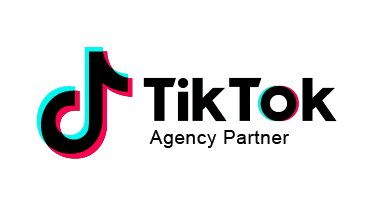What Are Google CTV Ads?
Connected TV advertising (CTV advertising) has been steadily gaining popularity over the last few years because of its strategic placement. These ads are featured on Smart TVs, and 56.7% of people choose to watch video content on streaming services instead of TV and DVDs. In this blog post, we’ll explore CTV ads and how they work, the benefits they offer, and how you can get started using them to promote your business.
Table of Contents
What Are CTV Ads?

CTV Ads Are An Advertising Format Shown On Smart TVS
Source: Freepik
CTV is a term used to describe any TV that can connect to the internet. This includes Smart TVs, streaming devices (like Apple TV and Mi TV Stick), and gaming consoles. As more and more people cut the cord and make the switch from traditional satellite TV to streaming services like Netflix and Disney+ Hotstar, digital marketers have been exploring CTV as another possible channel for them to use to reach their audiences.
CTV ads are video ads served to viewers on Connected TV devices. These ads can be shown before, during, or after a streaming program, and they can be targeted to specific audiences based on factors like location, interests, and viewing habits.
Google is one of the major players in the CTV ad space. Its CTV ad platform allows advertisers to reach audiences across a wide range of streaming services and devices. With a CTV advertising campaign, you can create and manage your campaigns using the same tools you use for other Google Ads campaigns, making it easy to get started and track your results.
Benefits of Google CTV Ads
There are several key benefits to using Google CTV ads as part of your digital marketing strategy, including:
- Extensive Reach: You can reach a large and growing audience of traditional TV cord-cutters who may not be reachable through traditional TV advertising. Plus, because CTV is often watched in groups or with family members, your ads have the potential to reach multiple people at once.
- Better Audience Targeting: You can target specific households based on demographics, interests, and location, just like you would with online ads. This means you can ensure your ads are being shown to the right people, at the right time, and in the right place.
- Brand Awareness: CTV campaigns are a great way to increase brand awareness and reach potential customers in a new and engaging way.
- Measurable Results: Unlike traditional TV advertising, CTV advertising is trackable and measurable. With Google CTV Ads, you can see how many people viewed your ad, how long they watched it, and how many of them took action (visiting your website, making purchases) after seeing your ad based on different types of data provided by the streaming publishers.
New CTV Advertising Features
The Display & Video 360 platform from Google has unveiled fresh features that can aid marketers in the planning, purchasing, and analysis of CTV campaigns. As these campaigns gain prominence, these innovative features now incorporate TV functionality to assess the unique and incremental reach of streaming publishers. These new features include:
Reach Planner Tool
This tool is designed to help advertisers plan and optimise their campaigns by providing valuable insights into the reach and frequency of their ads. With the new TV functionality, advertisers can now evaluate the unique and incremental reach of streaming platforms, allowing them to make more informed decisions about where to allocate their ad spend.
Now, you can input your targeting criteria, such as age, gender, and interests, and the tool will provide an estimate of the reach and frequency of your ads across different streaming platforms. This can help you determine which platforms are most effective for reaching your target audience and optimise your campaign accordingly.
Unique Reach Overlap Report
The Unique Reach Overlap report is designed to help advertisers identify instances where the same viewer has been exposed to multiple ads, which can lead to media waste and decreased efficiency. With the report, advertisers can see how many unique viewers were reached by each ad and how many viewers were reached by multiple ads. This information can then be used to adjust campaign targeting and messaging to minimise overlap and improve overall performance.
Best Practices for Google CTV Ads
Here are some best practices to remember when creating and running your Google CTV ad campaigns:
- Use eye-catching visuals: Since CTV ads are shown on larger screens, it’s important to use high-quality visuals that will grab the viewer’s attention. Make sure your ads are clear, engaging, and designed to capture the viewer’s attention within the first few seconds.
- Target your ads: Take advantage of Google’s targeting options to ensure your ads are seen by the right people.
- Test and optimise your campaigns: Like any other digital marketing campaign, it’s important to test and optimise your Google CTV ads to improve performance. Experiment with different ad formats, targeting strategies, and messaging to find out what resonates with your audience best to drive the most conversions.
- Use call-to-actions: Encourage viewers to take action after seeing your ad by including a clear call-to-action (CTA). This could be anything from visiting your website to signing up for a free trial.
- Monitor your results: Keep a close eye on your campaign’s performance using Google Ads reporting tools. This will allow you to track key metrics like impressions, clicks, and conversions, and make adjustments as needed.
Google CTV ads are a great way to reach a large and engaged audience on their Connected TV devices. By partnering with a reliable and experienced digital marketing agency like Primal Digital Marketing Agency Malaysia, you can take your advertising efforts to the next level.
With a range of digital marketing services, including SEO services and PPC advertising to help businesses stand out and succeed in today’s competitive online landscape. Contact us today to learn how we can help your business achieve its marketing goals.









Join the discussion - 0 Comment